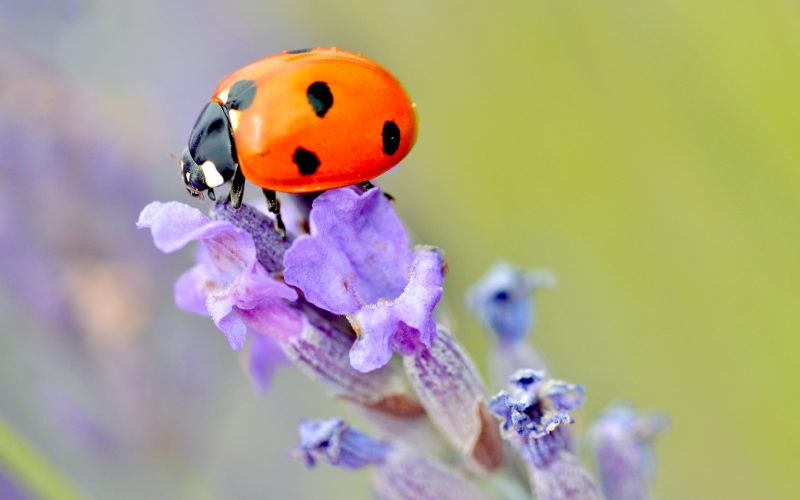Do ladybugs bring good luck? Well, not if you’re an aphid.
Ladybugs are fantastic predators of aphids (eating about 5,000 in a lifetime, or 50 per day for just the adult stage) and soft-bodied insects commonly found in the garden. Some ladybugs also feed on plants and pollen. But not much eats them – ladybugs can “play dead” and secrete a nasty-tasting fluid from their legs that deters predators.
Ladybugs, also called lady beetles or ladybird beetles, are not true bugs but beetles in the Coccinellidae family. They can be yellow, orange, or scarlet red, and have varying numbers of spots, stripes, or no markings at all. Not every beetle-like creature with spots is a ladybug, and you can’t age a ladybug by the number or placement of its spots – but spot number may help in species identification, as is the case with the seven-spotted ladybug. Some ladybugs are so special they will take aphids and eat them right out of the hand, and drink from a dewdrop on a fingertip! (Seriously, I’ve fed ladybugs by hand.)
Most species of ladybugs overwinter on the south sides of houses and other large objects, and remain dormant throughout the coldest months. They only live to be about one to two years old, and pass through several life stages: eggs, larvae, pupa, and adult. Eggs need to be laid near prey species, typically on the undersides of leaves. In less than a week, the eggs hatch into larvae which molt many times as they grow. Eventually the larva attaches itself to a leaf and becomes a pupa, and finally, one week later, a beautiful adult.
The name “ladybug” originated in Christianity. Legend has it that during the Middle Ages, European farmers began praying to the Blessed Lady (the Virgin Mary) to save their crops from plagues of pests. Soon, the farmers noticed ladybugs in their fields, and the crops were miraculously saved. Good fortune became associated with the black and red beetles, and farmers began calling them “lady beetles.” In Germany, they’re called Marienkafer, which means Mary beetles. Ladybugs are found throughout popular culture, and are used as logos for everything from bookstores to supermarket chains and sororities. In the Netherlands, their symbol is used on street tiles to mark the place where senseless violent crimes have occurred.
Want ladybugs? You can now buy 1,500 of them on Amazon for less than ten dollars! Guaranteed live delivery, it includes pre-fed ladybugs with a poster on their life cycle, an educational sheet with release tips, release rates, and ladybug fun facts, and apparently they are just great for kids’ birthday parties. I had no idea what I was missing out on with my Strawberry Shortcake and Lisa Frank birthday parties as a child, although I’m not sure what people do with them at a party!
Amanda Bancroft is a Master Naturalist and volunteers with her husband Ryan for their solar-powered online educational center on how to make a difference with everyday choices at: www.RipplesBlog.org.











